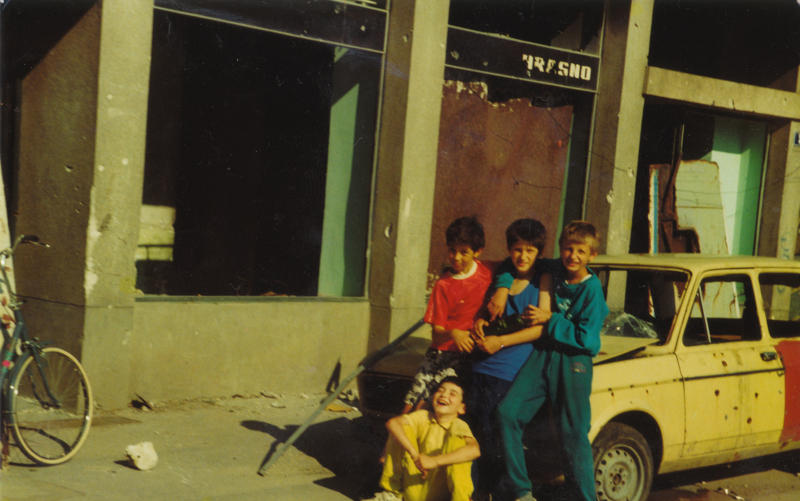1992-1996, the city of Sarajevo is under siege and the children cannot attend school, play or move as freely as they would like.
But scattered initiatives started to provide children with a basic need: schooling. A person, often a professor, will gather the children hiding in the basement of the building and some others from the vicinity and will organize a class. These initiatives will quickly build up into a local school system put in place by the Pedagogical Institute of the city to pursue schooling during the war and under the extreme conditions of siege that the city of Sarajevo was painfully undergoing.
This will reveal to be a memorable experience for both teachers and students. Sarajevo is unique in that sense; not only for conducting class during wartime; which is something that already happened in other cities: Beirut, Kosovo, the Jewish ghetto in Warsaw; but for “building” a system of schooling that spread in all the zone of free Sarajevo. This, undoubtedly, changed the experience of schooling for children, and probably their perception of the world.
From an activity that conventionally takes place in a school building, schooling will become a “subversive” activity occurring in makeshift classrooms: a basement, an abandoned shop, etc. considered safe. These spaces were called punkts, and it is estimated that the city counted 360. These classrooms were also different; few had desks, without lighting, or even a board. Organized in a network system, occurring in a moment of suspension of all rules, defying the violence and restrictions of war, schooling will become a form of play, a détournement of a situation, an almost subversive activity.
For Maria Montessori, play is a fragment of space and time situated in between an individual and the world. It is in this space-time frame that the individual builds up his own self and also a representation of the world. That is why it such an essential activity, its absence endangers the children’s ability to confront the “outside”.
For the issue #44 of the Canadian Magazine, On site review, on the theme of “Play” my contribution with the article Play in wartime schoolscapes tackles this idea of schooling as a subversive act enacted like play by detouring all the features related to this activity. In Sarajevo’s war schoolscapes, overlapped the spaces “assigned” to this activity. All the urban elements became accomplice of the children’s walk to school, a risky itinerary at the core of this play.
At the end, this article builds upon the research related to the first children’a playgrounds designed as public amenities and their relation to post-war urban reconstruction. Ranging from the junk playgrounds first appearing under Nazi occupation in Denmark to the “in-between” playgrounds of Aldo Van Eyck in post-war Amsterdam, these playgrounds will finally lay the grounds for the recognition of children as urban actors in the urban space.
A short post-script draws attention to the actual situation in the Gaza strip, where children, again painfully strive and resist through play.
The issue of On site review is available online. For a reading of my article follow the links.
or
https://issuu.com/onsitereview/docs/44play?fr=sN2E0MzcxNTI2NDI
Photo credits: Personal archive of Čedo Pavlović.


